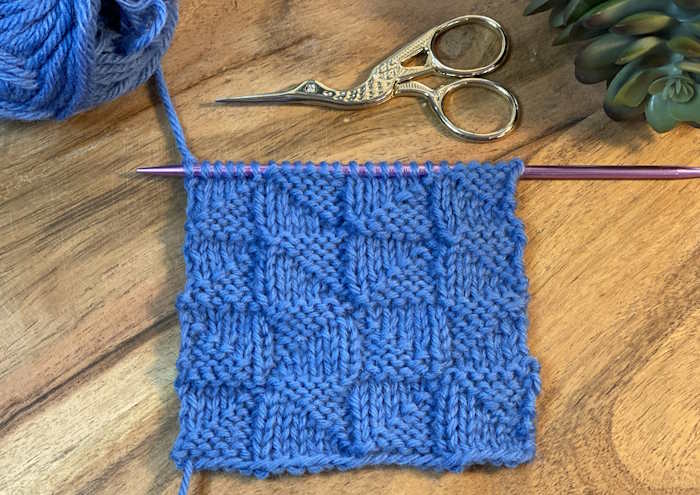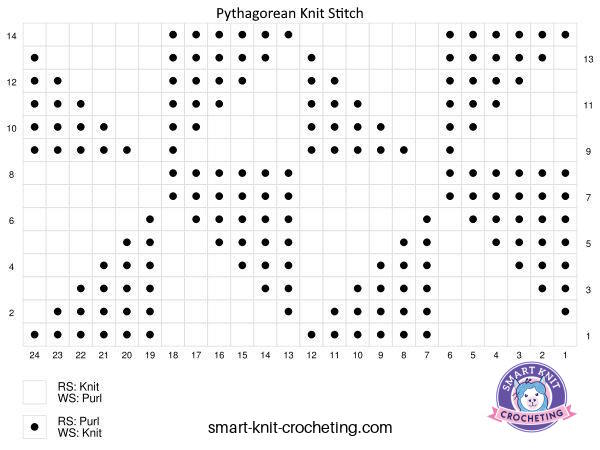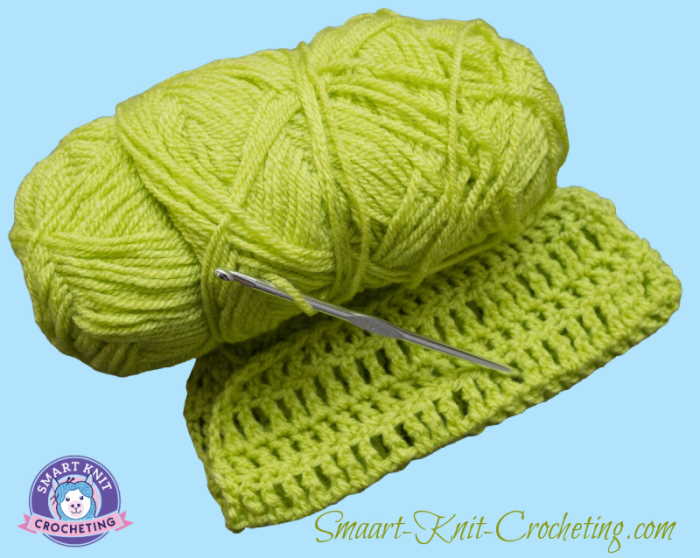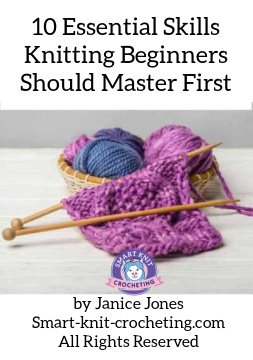- Home
- Knit and Purl Stitches
- Pythagorean Knit Stitch Pattern
Easy Pythagorean Knit Stitch Tutorial for New Knitters
Pythagorean Knit Stitch Pattern by Janice, Last Updated November 23, 2025
Do you love math? No worries if math isn't your favorite subject; it certainly isn't mine. But I have a stitch for any of you math lovers out there.
Don't worry, I won't quiz you on the Pythagorean theorem, mainly because I'm a math idiot. However, someone was brilliant and created this design that creates alternating right-sided triangles.

Similar to the Parallelogram Stitch, it's not difficult as all you need to know is how to make knits and purls, but it's hard because it requires concentration and careful attention to counting, and it is a 14-row repeat.
Table of Contents
Notes about the Pythagorean Triangle Stitch
Supplies Needed for this Tutorial
Learn How to Read Knitting Charts
Ideas for Putting this Stitch to Use
Skill Level
Easy
Abbreviations Used
K – Knit
P – Purl
** - Repeat the instructions between the two asterisks for the number of times indicated in the instructions
CO – cast on
BO – Bind Off
RS – right side
WS -wrong side
Skills Needed
How to knit
How to purl
How to cast on stitches
How to bind off stitches
How to weave in ends
How to block your knitting
Notes about the Pythagorean Knit Stitch Pattern
- This is a 14 row repeat.
- It’s worked on a multiple of 12 stitches
- Reversible
Is this Pattern Reversible?
Yes, this an utterly reversible pattern
 Right Side
Right Side Wrong Side
Wrong SideSupplies Needed for this Tutorial
- Yarn
- Knitting Needles appropriate for the yarn chosen.
- Scissors
- Yarn needle for weaving in end
- Stitch marker (optional)
- Row counter (optional) or another method of keeping track of rows.
Written Instructions for the Pythagorean Knit Stitch Pattern
For the purposes of this tutorial, I cast on 24 stitches.
Cast on a multiple of 12 stitches.
Row 1: * Knit 6, purl 6; repeat from * to end.
Row 2: * Purl 1, knit 5, purl 5, knit 1; repeat from * to end.
Row 3: * Purl 2, knit 4, purl 4, knit 2; repeat from * to end.
Row 4: * Purl 3, knit 3, purl 3, knit 3; repeat from * to end.
Row 5: * Purl 4, knit 2, purl 2, knit 4; repeat from * to end.
Row 6: * Purl 5, knit 1, purl 1, knit 5; repeat from * to end.
Row 7: * Purl 6, knit 6; repeat from * to end.
Row 8: * Knit 6, purl 6; repeat from * to end.
Row 9: * Knit 5, purl 1, knit 1, purl 5; repeat from * to end.
Row 10: * Knit 4, purl 2, knit 2, purl 4; repeat from * to end.
Row 11: * Knit 3, purl 3, knit 3, purl 3; repeat from * to end.
Row 12: * Knit 2, purl 4, knit 4, purl 2; repeat from * to end.
Row 13: * Knit 1, purl 5, knit 5, purl 1; repeat from * to end.
Row 14: * Purl 6, knit 6; repeat from * to end.
Repeat Rows 1 - 14 until you reach your desired length. Bind off and weave in ends.
Learn How to Read Knitting Charts (Knit Chart): Pythagorean Knit Stitch Pattern

Most knitters just getting started rely on written instructions such as those above to help them learn how to knit. But instructions are also available in the form of charts.
Charts using universally understood symbols become more critical as patterns become more elaborate. The pythagorean knit stitch is a straightforward, beginner-friendly pattern that can be understood by reading written instructions.
It is essential, however, to learn how to follow easy charts at an early stage. I've created a chart for you to use, if you like.
Ideas for Putting this Stitch to Use
This is a nicely textured pattern that is made up of repeating triangles. It would work nicely for blankets, pillow covers or washcloths.










